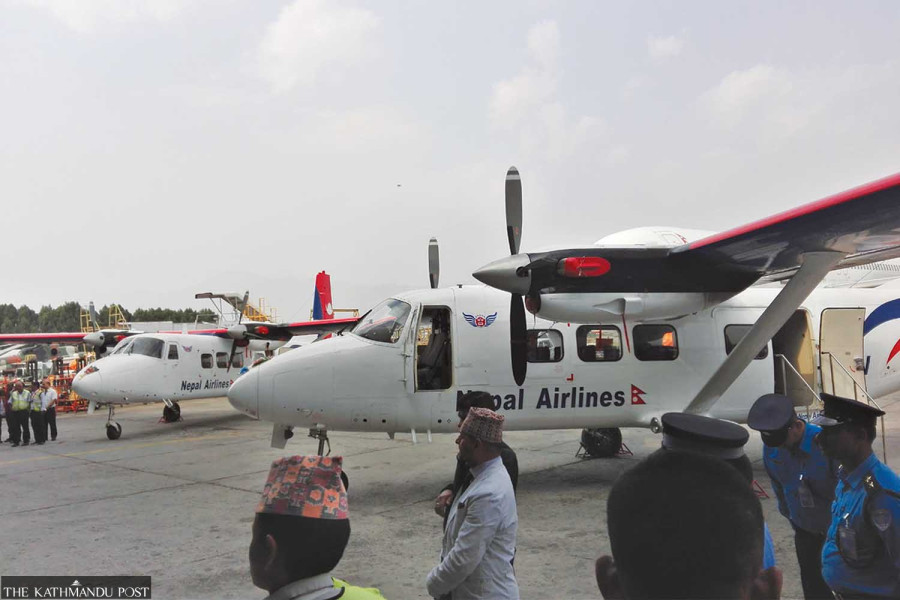Editorial
The incompetent bunch
Who were the people who decided that a plane which had no financial viability should be bought?
If there is anything that explains Nepal's utter failure in managing its resources, we need look no further than the grounded Y12e and MA60 aircraft gathering dust and moss at Tribhuvan International Airport's remote parking bay. The Chinese-made planes, acquired between 2014 and 2018, were expected change the fate of Nepal Airlines for the better. After all, the planes were being acquisitioned after 28 years, and it was natural for Nepalis to expect that the national flag carrier would take a much-awaited flight towards prosperity. However, it soon became clear that the aircraft would be a liability rather than bring a much-needed respite for a perennially cash-strapped Nepal Airlines.
As the Ministry of Finance starts to pay the interest on the loans, the planes remain grounded for two years after airline officials decided that their operation cost exceeded their earnings. However, authorities failed to live up to the promise they made while grounding the planes: They had said they would explore multiple options, including leasing and selling, to recover the losses. An official of Nepal Airlines last year claimed the carrier had constituted a committee to determine the lease rate, and that it would invite bids from interested parties to apply for it. But now, it seems that the authorities ran out of options without even exploring any of them.
As the planes remain in the hangar for an extended period, experts fear that the structural integrity of the steelbirds could corrode and become dangerous to fly. The fate of the five planes lying unused on the tarmac, apart from the sixth one that crashed in Nepalgunj and became useless, seems no different from that of the hundreds of cars that lie unused in government building compounds as officials worry zilch about taking care of public property. Now, neither Nepal Airlines—the operator of the planes—nor the Finance Ministry—the owner—has any clue what to do with the planes that have little prospect of being leased or sold.
The imbroglio considering the unusable planes raise questions on the integrity of the individuals who decided to purchase them in the first place. Who were the people who decided that a plane which had no financial viability should be bought with the people's hard-earned money? Who were the technical supervisors who gave the purchase of the planes the green light without a thorough investigation? Officials need to answer the people. Why is it that those at the top—from politicians to bureaucrats—are eager to incur heavy financial burden when they aren't sure of their ability to make things happen?
That the planes were grounded just a few years after they were bought shows how little thought officials and leaders had put in while buying them, as if they were buying vegetables in the local market. It is this callousness of the officials and leaders that makes people wonder if big infrastructure projects including Nijgadh Airport, Pokhara Airport and Bhairahawa Airport are going to be white elephants that deplete the country's precious financial resources. It makes one wonder if those at the helm will start investing their hearts and minds to the national endeavours they begin or will remain as ignoramus as ever, pushing public institutions further to the brink. It is not enough to just find ways of getting rid of the planes. The government should seek accountability from those who were involved in the pursuit of the ambitious and expensive plan that would face turbulence right from the start.




 6.12°C Kathmandu
6.12°C Kathmandu














